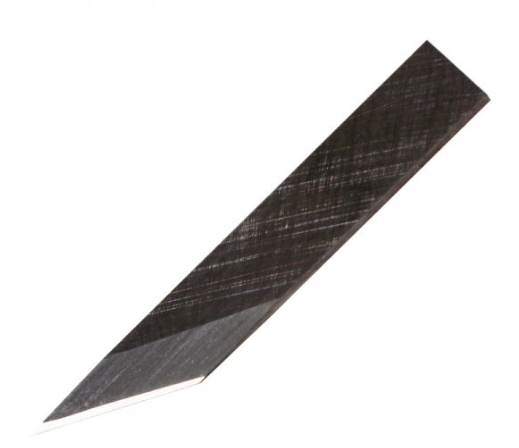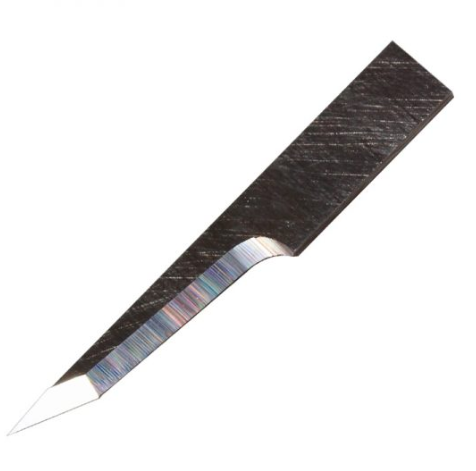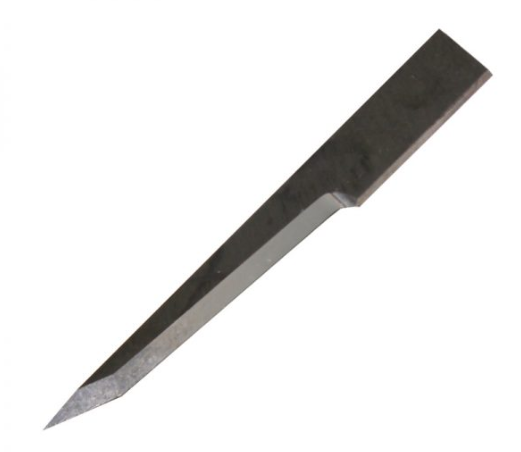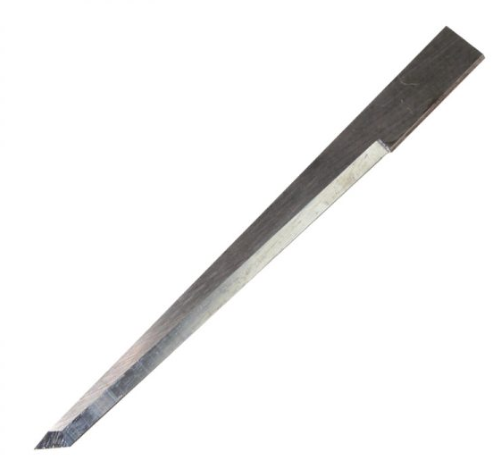Choosing the Right Blade
1. **Blade Type**
- **Oscillating Blades**: Ideal for thicker and denser materials like foam boards and corrugated stock. They come in various lengths (e.g., T00418, T00420, T00421) to handle different material thicknesses.
- **Double Edge Blades**: Suitable for materials where sharpness on both sides is beneficial, such as vinyl and PVC. Examples include T00312 and T00313.
- **Single Edge Blades**: Versatile for straight and curved cuts in materials like Sintra and Styrene.
- **Coroplast Knife Blades**: Designed for coroplast and cardboard.
2. **Blade Length and Shape**
- Ensure the blade length is at least 5mm longer than the material thickness for efficient cutting.
- Choose the correct blade angle based on the material density and cutting requirements. For example, 0° blades are ideal for low-density materials, while steeper angles (30°, 35°) suit denser materials.
3. **Blade Rigidity**
- Thicker blades offer more rigidity, essential for cutting harder materials. Common thicknesses include 0.63mm and 1.5mm.
Using Colex Cutting Knife Blades and Knives Correctly
1. **Installation**
- Follow the manufacturer's instructions for installing blades into the knife holder. Ensure the blade is securely fastened to prevent movement during cutting.
2. **Material Selection**
- Match the blade type to the material being cut. For example, use oscillating blades for foam boards and double-edge blades for vinyl.
3. **Cutting Techniques**
- Use the correct cutting speed and pressure. Higher speeds are generally better for softer materials, while slower speeds are more suitable for denser materials.
- Maintain consistent pressure to avoid uneven cuts.
4. **Maintenance**
- Regularly inspect and replace blades when they become dull to maintain cutting efficiency and prevent damage to the machine.
- Use lubricants like grease or oil to keep moving parts well-lubricated and reduce wear.
5. **Safety Precautions**
- Always wear protective gear, such as gloves and safety glasses, when handling sharp blades.
- Ensure the cutting area is clear of obstructions and the material is securely positioned on the cutting mat.
Choosing the Right Mat
- **Mats** are crucial for protecting the cutting surface and ensuring accurate cuts. Choose mats based on the cutting task, such as beige mats for general tasks or felt mats for absorbing impacts.
By following these guidelines, you can optimize the performance of your Colex cutting equipment and achieve high-quality results in various applications.
PREV : JWei Milling & Router Bits J515 J516 J517 Difference Cutting Materials Application NEXT : How to Choose and Use Aristo Cutting Knife Blades and Knives Correctly











